Zombie Bunny is Reader-supported and may earn an affiliate commission through links on our site.
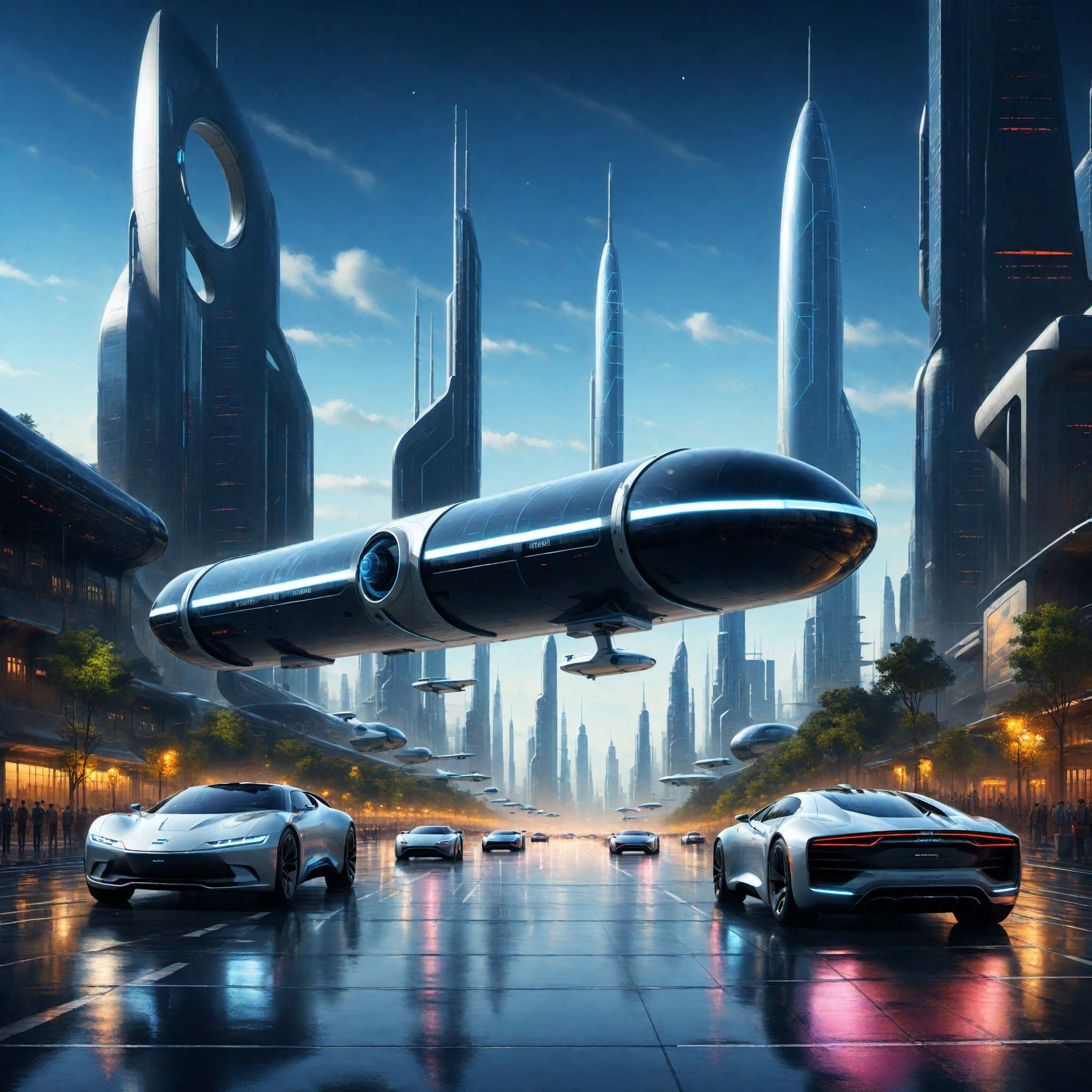
Jetsons Reality: The Dawn of Flying Cars
Investigate the journey of flying cars from animated dreams to near reality. #FlyingCars #JetsonsReality
From the Jetsons to reality, the concept of flying cars is inching closer than ever before. This blog delves into the fascinating world of flying cars, exploring their history, the technology behind them, and the challenges and opportunities they present. We look at the potential impact on transportation, urban planning, and the economy, and how this revolutionary technology could redefine commuting, tackle traffic congestion, and even reshape our cities. Join us on this thrilling journey through the realities and possibilities of a future where personal aerial transportation could become as routine as driving.
Introduction

© Copyright , ZombieBunny.Org
The fascination with flying cars
The fascination with flying cars has been deeply ingrained in human imagination for decades. This concept, which was once only a part of science fiction, is slowly inching towards reality. Flying cars, synonymous with the freedom of the open skies, epitomize the pinnacle of personal mobility. They represent not only the evolution of transport but also symbolize human aspiration, innovation, and the relentless pursuit of pushing boundaries.
The allure of a flying car goes beyond its functional capabilities. It’s an embodiment of our collective desire to conquer the skies, to overcome terrestrial limitations, and to make the impossible possible. This fascination is amplified by pop culture references, with the most iconic being the animated sitcom, The Jetsons, where commuting in flying cars was a part of everyday life. As we stand on the precipice of this once fantastical dream becoming a reality, it’s worthwhile to explore the journey of flying cars, from fiction to prototype to the dawn of a new era in transportation.
The Jetsons as a cultural reference
The Jetsons, a popular animated sitcom from the 1960s, has long been the go-to cultural reference when envisioning the future of transportation. Set in a utopian future, the show portrayed a world where flying cars were as commonplace as smartphones are today. It has left an indelible imprint on our collective consciousness, shaping our expectations of future technologies.
The Jetsons’ flying car wasn’t just a vehicle—it was a symbol of future possibilities, a promise of technological advancements that could transform our lives. Now, as we find ourselves on the cusp of turning this fiction into reality, the Jetsons’ depiction of a world with flying cars serves as a benchmark for our aspirations. It’s a powerful reminder of how far we’ve come and a beacon guiding us towards a future where personal aerial transportation could become as routine as driving. As we delve into the dawn of flying cars, the Jetsons remain a key cultural touchstone, encapsulating our fascination with, and anticipation for, this revolutionary technology.
Introduction to the dawn of flying cars
As we move into a new era of transportation, the dawn of flying cars is becoming more than just a futuristic dream. This quantum leap in mobility is set to redefine the concept of commuting, offering a solution to the perennial issues of traffic congestion and long travel times. The fantasy of soaring above gridlocked roads in a personal flying vehicle is tantalizingly close to realization, and it’s a shift that promises to revolutionize our world in ways we can barely begin to imagine.
This evolution towards the dawn of flying cars is being fueled by advances in technology and escalating investments in research and development. Innovators around the globe are racing to create vehicles that are not only capable of safe, controlled flight, but are also scalable, sustainable, and accessible to the masses. As we stand at the precipice of this exciting new phase in mobility, this blog will delve into the fascinating world of flying cars, exploring the challenges, opportunities, and the potential impact of this groundbreaking technology. Join us on this journey as we navigate through the realities and possibilities of a future that The Jetsons once prophesied.
A Brief History of Flying Cars
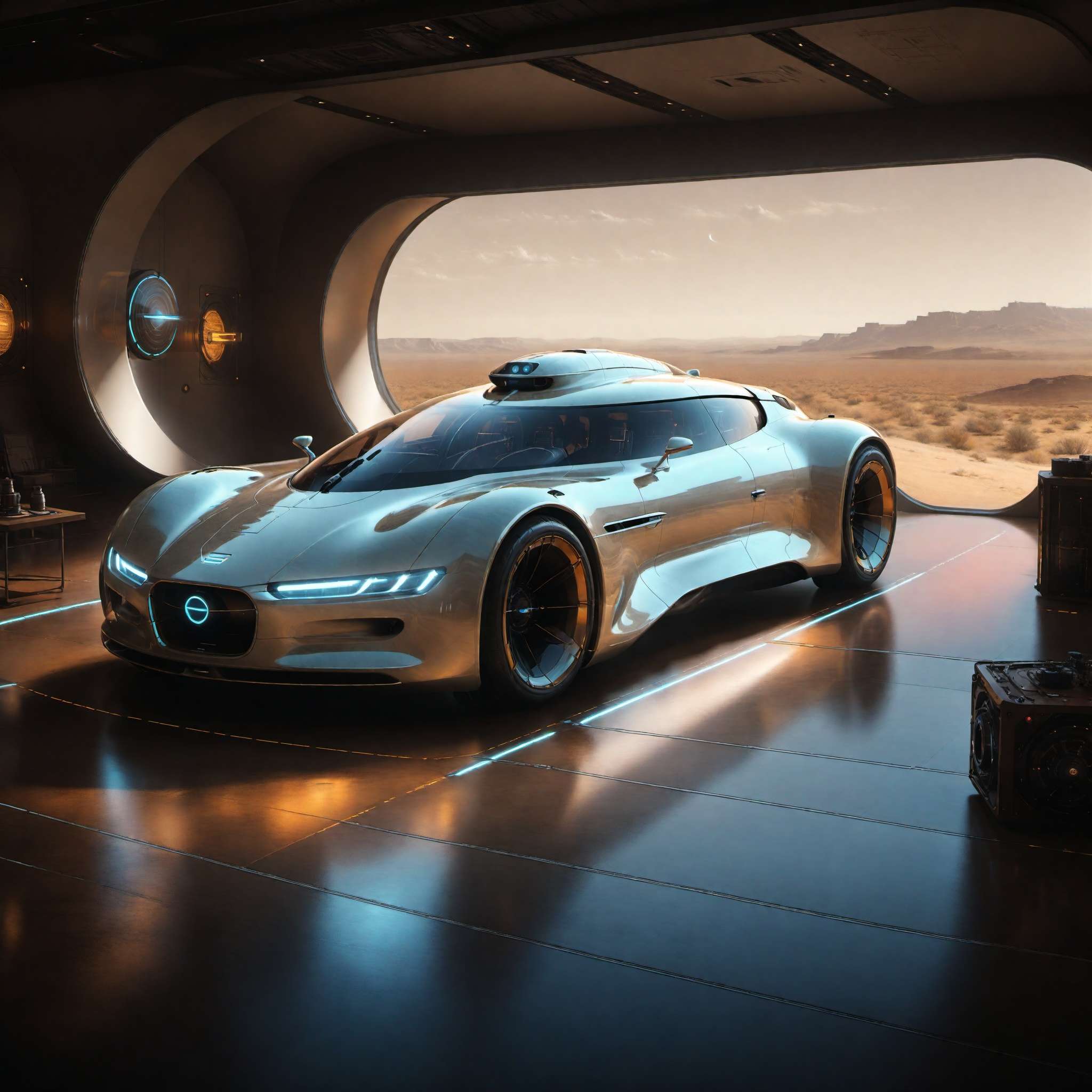
© Copyright , ZombieBunny.Org
Early attempts at combining cars and aircraft
The idea of combining cars and aircraft has its roots in the early 20th century. With the advent of the automobile and the airplane, inventors began dreaming of a hybrid that could offer the best of both worlds. In 1917, Glenn Curtiss, an aviation pioneer, developed the Curtiss Autoplane, widely recognized as the first attempt to build a flying car. Although it was able to hop short distances, it never achieved full flight.
In the 1930s, the concept of flying cars gained momentum with Waldo Waterman’s Arrowbile and the Fulton Airphibian. The Arrowbile was a three-wheeled car that could convert into a plane, while the Airphibian allowed its operator to detach its wings and propeller to transform into a car. While both prototypes successfully flew, they faced significant commercial and regulatory challenges, preventing them from mass production. These early attempts at marrying cars and aircraft, though not entirely successful, laid the groundwork for the dream of flying cars, showing that such a fusion was possible. They sparked the imagination of innovators and paved the way for the subsequent developments in the field of personal aerial transportation.
Progress and setbacks in the 20th century
Throughout the 20th century, the race to create a successful flying car continued with various degrees of progress and setbacks. The era was marked by a stream of innovative prototypes, some achieving flight but failing to meet practical or regulatory standards. Notable among these was Moulton Taylor’s Aerocar in the 1950s, which managed to secure conditional FAA approval but failed to achieve commercial success due to high production costs and stringent regulations.
The latter half of the century witnessed a surge in technology but also increased regulatory hurdles and safety concerns. Despite the challenges, the dream of flying cars persevered. In the 1970s, Henry Smolinski attempted to combine a Ford Pinto with a Cessna Skymaster aircraft, although the venture ended tragically with a fatal crash during testing.
As we approached the turn of the century, advances in materials, engineering, and computer technology rekindled optimism. However, the path was not without obstacles. The technical challenges of creating vehicles that could safely and efficiently transition between driving and flying, coupled with regulatory, safety, and infrastructure hurdles, continued to impede progress. Yet, these trials and tribulations of the 20th century served as essential stepping stones, shaping the trajectory of flying car development and fueling the relentless pursuit of this extraordinary vision.
Notable inventors and their contributions
The history of flying cars is marked by visionary inventors whose contributions have significantly advanced the field. Glenn Curtiss, often dubbed the “father of the flying car,” made the first documented attempt to combine a car and an aircraft with his 1917 Autoplane. Although it never achieved full flight, it sparked the concept of a vehicle capable of both driving and flying.
Another significant contributor was Waldo Waterman, who successfully flew his Arrowbile, a vehicle-aircraft hybrid, in 1937. Waterman’s design was one of the first to successfully transition from road to air, marking a significant milestone in flying car history.
In the 1950s, Moulton Taylor introduced the Aerocar, a trailblazing vehicle that secured conditional Federal Aviation Administration (FAA) approval, a first for any flying car. This marked a pivotal moment in the recognition and regulation of flying cars.
In the modern era, pioneers like Paul Moller have continued the quest for a viable flying car. Moller’s Skycar, while never commercially successful, has been a fixture in the continuing story of flying cars, symbolizing the enduring dream and ongoing innovation in this field.
These inventors, among many others, have played a vital role in shaping the history of flying cars. Their pioneering efforts have paved the way for today’s innovators who stand on the brink of turning the dream of flying cars into a reality.
Technology Behind Flying Cars

© Copyright , ZombieBunny.Org
Aerodynamics and propulsion systems
The aerodynamics and propulsion systems form the backbone of the technology behind flying cars. To achieve flight, a vehicle must overcome gravity and air resistance, which calls for a unique blend of automotive and aeronautical engineering.
Aerodynamically, flying cars need to be lightweight yet robust, with a design that minimizes drag and maximizes lift. Many modern prototypes use a combination of wings and rotors to achieve this. Wings provide lift during flight, while rotors enable vertical take-off and landing, a crucial feature for navigating urban landscapes.
The propulsion system propels the vehicle through the air and plays a vital role in controlling the vehicle’s direction. The majority of flying car designs employ either electric or hybrid-electric propulsion systems. Electric systems are quieter, more efficient, and more environmentally friendly than their gas-powered counterparts, but they face challenges in terms of battery weight and range.
Advancements in materials science, including the use of lightweight composites, are helping to overcome these challenges and improve the aerodynamic efficiency of flying cars. Similarly, breakthroughs in electric motors and battery technology are pushing the boundaries of what’s possible with propulsion systems.
The intricate interplay of aerodynamics and propulsion systems is a testament to the marvel of engineering that flying cars represent. As technology continues to evolve, these systems are continuously refined, bringing us ever closer to realizing the dream of personal aerial transportation.
Safety and navigation technology
Safety and navigation are paramount in the development of flying cars. As these vehicles will operate in three dimensions, unlike traditional cars, their technology needs to address unique challenges, including collision avoidance, weather conditions, and navigation through airspace.
One of the key safety technologies being incorporated into flying cars is sense-and-avoid technology. This technology uses sensors and advanced algorithms to detect and avoid obstacles, both stationary and moving. It’s essential for preventing collisions and ensuring safe navigation, especially in densely populated urban areas.
Another crucial aspect of safety is the ability to handle emergencies. Many flying car designs incorporate multiple redundancy systems and fail-safe features, such as parachutes for emergency landings, to ensure passenger safety in all scenarios.
Navigation technology for flying cars is also being developed to manage air traffic and route planning effectively. This includes the use of GPS and advanced mapping systems for precise navigation, as well as communication systems for coordinating with air traffic control and other aircraft.
Artificial Intelligence (AI) and machine learning are also playing a significant role in enhancing the safety and navigation of flying cars. These technologies are being used to develop autonomous flight systems, which can analyze vast amounts of data in real-time and make complex decisions, potentially making flying cars safer and more efficient.
As we move closer to a future with flying cars, continuous advancements in safety and navigation technology will be crucial in ensuring these vehicles can operate safely and efficiently in our skies.
Innovations in fuel efficiency and sustainability
As the world grapples with climate change and dwindling fossil fuel resources, the need for fuel efficiency and sustainability plays a significant role in the development of flying cars. Today’s innovators are not only focused on making flying cars a reality, but they are also committed to ensuring these vehicles are eco-friendly and sustainable.
One of the key innovations in this regard is the shift towards electric and hybrid propulsion systems. Electric motors are not only quieter and more efficient than traditional combustion engines, but they also produce zero emissions at the point of use. However, the current challenge lies in improving battery technology to increase the range and decrease the weight of these electric flying vehicles.
To tackle this, companies are investing heavily in advanced battery technologies, such as solid-state batteries, which promise higher energy density and faster charging times. Some are also exploring the use of alternative fuels, like hydrogen, for hybrid propulsion systems.
In addition to propulsion, advancements in materials science are contributing to fuel efficiency. The use of lightweight, high-strength composites reduces the weight of the vehicle, thereby decreasing the energy required for flight.
Sustainability in flying cars extends beyond just fuel efficiency. Consideration is also given to noise pollution, with many designs focusing on minimizing noise for low-impact urban operation. As we stand at the dawn of the era of flying cars, these innovations in fuel efficiency and sustainability are helping to ensure that this new form of transportation is not just feasible, but also responsible and environmentally friendly.
Regulations and Roadblocks
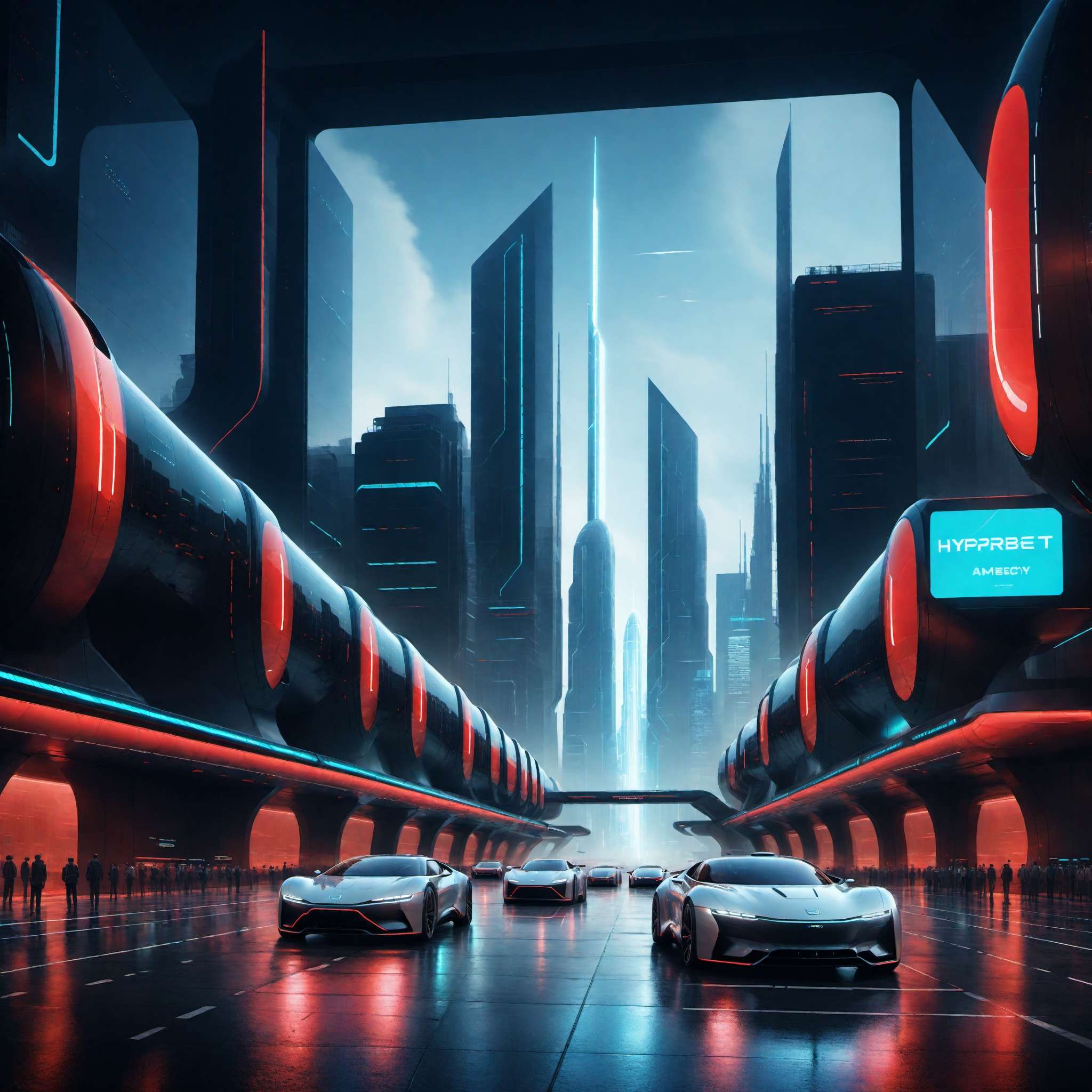
© Copyright , ZombieBunny.Org
Current aviation and vehicle regulations
Current aviation and vehicle regulations pose significant challenges for the integration of flying cars into our transportation system. As a hybrid of cars and aircraft, flying cars exist in a regulatory gray area between the Federal Aviation Administration (FAA) and the Department of Transportation (DOT).
As aircraft, flying cars must meet stringent FAA regulations regarding airworthiness, safety, noise, and emissions. This includes regulations on the design, manufacture, maintenance, and operation of the vehicle. They also need to comply with air traffic control rules and requirements for pilot licensing and training.
On the other hand, as road vehicles, flying cars must conform to DOT regulations, which cover aspects such as safety standards, emission controls, and crashworthiness. They must also meet state and local laws regarding vehicle registration, driver licensing, and insurance.
These regulations were developed for cars and aircraft operating independently, and they don’t fully account for a vehicle that operates both on the ground and in the air. This regulatory mismatch creates significant hurdles for flying car manufacturers, who must navigate a complex and often conflicting regulatory landscape. As the dawn of flying cars approaches, it’s clear that existing regulations will need to evolve to accommodate this revolutionary form of transportation, ensuring safety without stifling innovation.
Challenges in creating rules for flying cars
Creating rules for flying cars presents a unique set of challenges. Regulation must strike a balance between ensuring public safety and fostering innovation. Too much regulation can stifle progress, while too little can risk public safety and acceptance.
Regulators must consider a variety of factors, including the safety of people both in the air and on the ground, the impact on existing air and road traffic, noise levels, emission standards, and privacy concerns. They also have to account for the potential for autonomous operation and the integration of flying cars into existing and future air traffic management systems.
Another challenge is the international aspect of regulation. As flying cars could easily cross national borders, there will need to be international agreement on many regulations. This requires cooperation and coordination between different countries’ regulatory bodies, which can be a complex and lengthy process.
Moreover, regulation needs to keep pace with rapidly advancing technology. The development of flying cars is moving fast, and regulatory bodies must adapt quickly to ensure that rules stay relevant and effective.
These challenges underline the importance of proactive and forward-thinking regulation in the development of flying cars. Regulators and manufacturers must work together to create a regulatory framework that can support this revolutionary new form of transportation while ensuring the safety and acceptance of the public.
Potential roadblocks to widespread adoption
While the prospect of flying cars is exciting, there are several potential roadblocks to their widespread adoption. Beyond regulatory challenges, these include technical, infrastructural, and social issues that could slow down the integration of flying cars into our transportation system.
Technically, creating a vehicle that is safe, reliable, and efficient both in the air and on the ground is a considerable challenge. Battery technology, in particular, needs significant improvement to provide the power needed for flight without adding too much weight to the vehicle.
From an infrastructure perspective, accommodating flying cars requires considerable changes. This includes the development of takeoff and landing pads, refueling or recharging stations, and maintenance facilities. There will also need to be systems for managing air traffic, particularly in urban areas where the number of flying cars could be high.
Socially, public acceptance of flying cars is not guaranteed. Concerns about safety, noise, and privacy could lead to resistance. There are also questions about affordability and whether flying cars will be accessible to the average person or only to the wealthy.
Finally, there are environmental considerations. While electric flying cars could reduce emissions, their widespread use could increase energy demand significantly.
Overcoming these roadblocks will require concerted efforts from manufacturers, regulators, city planners, and society as a whole. It’s a complex and challenging journey, but one that could lead to a revolution in personal mobility.
The Economics of Flying Cars
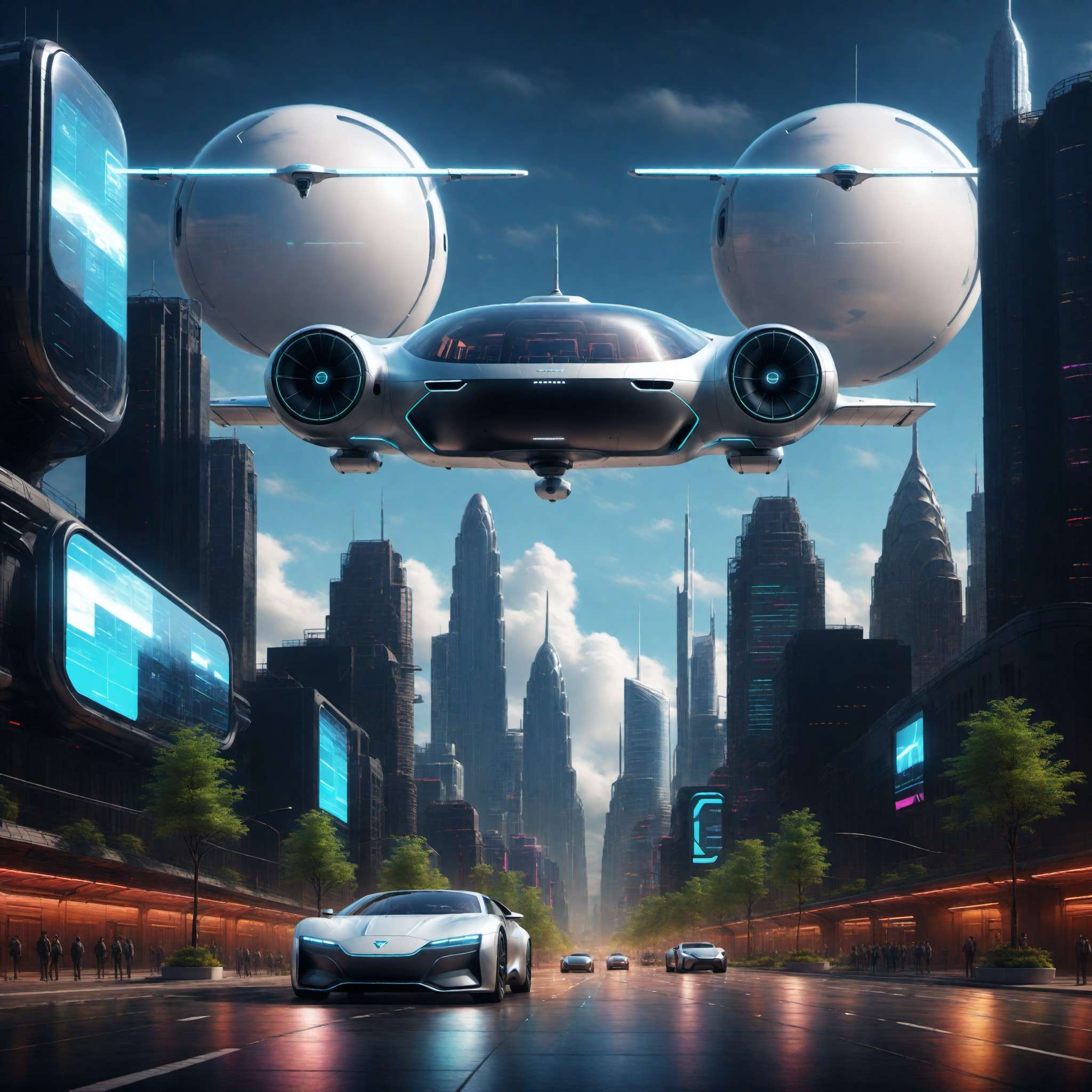
© Copyright , ZombieBunny.Org
Cost of development and production
The economics of flying cars is a crucial aspect to consider in their journey from concept to reality. One of the primary economic factors is the cost of development and production. Creating a flying car involves significant investment in research and development, testing, certification, and production setup.
Research and development costs are substantial as they involve designing and developing advanced technologies, from propulsion systems to safety features. This, coupled with the need for extensive testing to ensure safety and reliability, contributes to high development costs.
Certification costs are another significant expense. Complying with regulatory standards for both cars and aircraft requires rigorous testing and inspection, which can be time-consuming and costly.
Production setup costs are also high. Manufacturing flying cars requires specialized facilities and equipment, and the production process often involves expensive materials and complex assembly techniques.
Another factor to consider is the cost of creating the necessary infrastructure, such as vertical take-off and landing pads and maintenance facilities. While these costs might not be borne by the manufacturers themselves, they are a part of the overall economic equation for flying cars.
While the costs are high, the potential payoff is tremendous. As technology evolves and scales, costs could decrease, making flying cars a viable option for a revolution in personal transportation. Nevertheless, understanding and managing these economic factors will be key to the successful commercialization of flying cars.
Market demand and pricing
Another key facet of the economics of flying cars is understanding market demand and determining pricing. While flying cars capture the public’s imagination, the market demand for such vehicles is still uncertain.
On one hand, the convenience, time savings, and novelty of flying cars could generate significant demand, particularly in urban areas plagued by traffic congestion. On the other hand, factors such as safety concerns, regulatory hurdles, and the need for infrastructure could limit their initial uptake.
Pricing is another critical factor that will influence demand. The cost of producing a flying car, coupled with the need for manufacturers to recoup their substantial development investments, could lead to high prices that may be out of reach for the average consumer. However, some companies are exploring models such as ride-sharing or air taxi services, which could make flying cars accessible to a broader audience without the need for individual ownership.
The pricing will also have to account for the cost of operation, including energy costs, maintenance, insurance, and potential landing fees, all of which could impact the overall affordability of flying cars.
Successfully predicting market demand and setting an appropriate pricing strategy are complex tasks that require careful analysis and strategic decision-making. These factors will play a significant role in determining whether flying cars can move beyond the realm of science fiction and become a viable form of transport in the real world.
Possible economic impacts
The advent of flying cars could have significant economic impacts. These vehicles represent a new sector within the transportation industry, leading to the creation of jobs in manufacturing, maintenance, operations, and infrastructure development. As a new field requiring specialized skills, it could also stimulate education and training programs related to aerial vehicle technology and operations.
Flying cars could also lead to increased productivity by drastically reducing commute times, particularly in congested urban areas. By freeing up time currently spent in traffic, they could contribute to economic growth.
However, it’s also important to consider potential negative economic impacts. For instance, the widespread adoption of flying cars could disrupt existing industries, such as traditional automotive manufacturing and public transportation. There may also be economic implications related to the energy consumption of flying cars, including demand for electricity if these vehicles are electrically powered.
Furthermore, while flying cars could create new jobs, they could also make others obsolete. For example, if these vehicles are largely autonomous, as many predict, there could be less need for human pilots or drivers.
The economic impacts of flying cars are broad and multifaceted, affecting a range of sectors and stakeholders. As with any disruptive technology, managing these impacts will require thoughtful policies and planning to maximize the benefits and mitigate the downsides. As we move closer to the dawn of flying cars, understanding these potential economic impacts is essential for preparing for this transformative shift in transportation.
Taking Flight: Current Projects and Companies
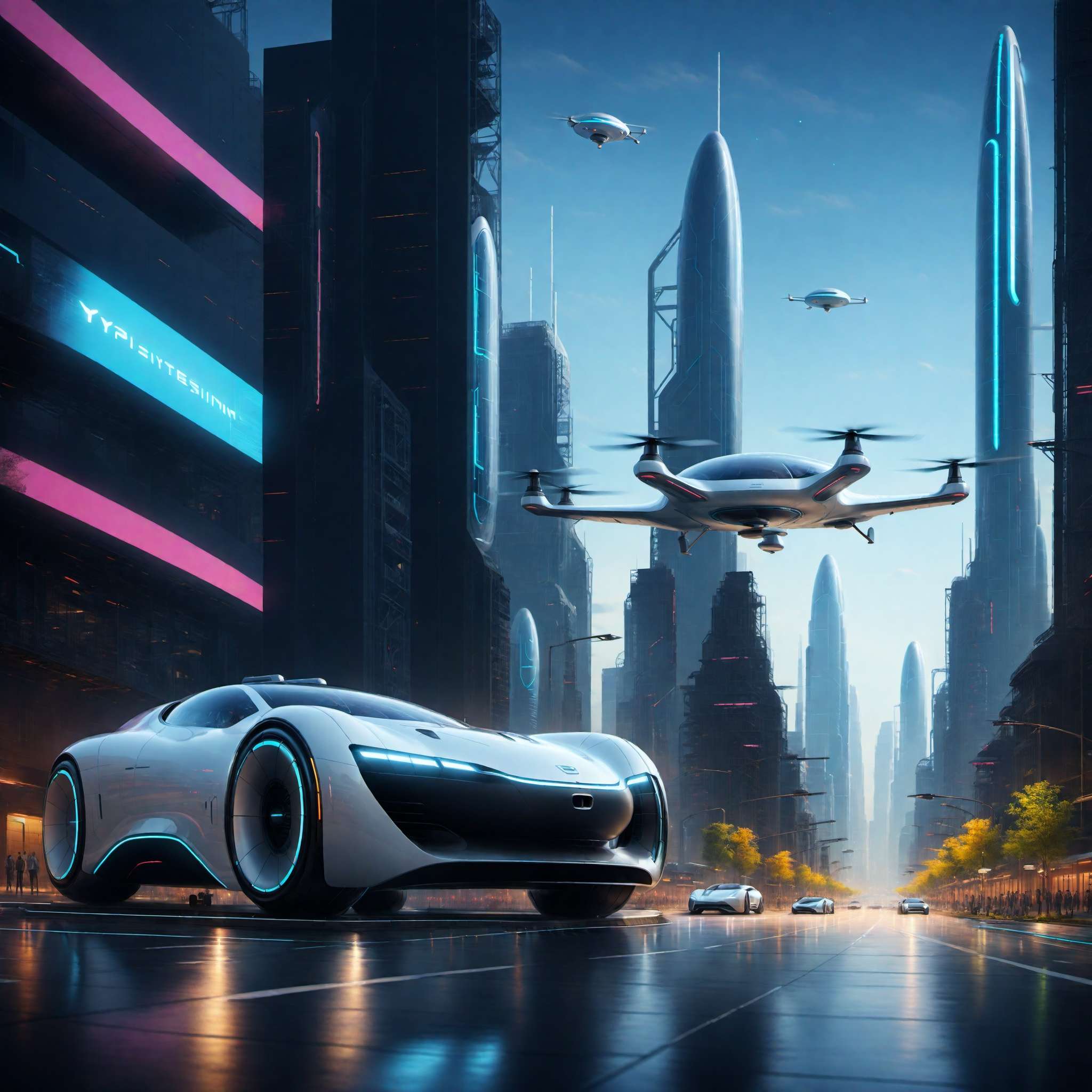
© Copyright , ZombieBunny.Org
Promising flying car projects
Several promising flying car projects are currently underway, each bringing us closer to a future where personal aerial transportation is a reality.
One of the most ambitious projects is by Airbus, which is developing the CityAirbus, an electric vertical take-off and landing (eVTOL) vehicle designed for urban air mobility. The CityAirbus is envisioned as a shared air transportation service for up to four passengers, reducing traffic congestion in cities.
Another notable project is Terrafugia’s Transition, a two-seater aircraft that doubles as a road-legal car. The Transition has already received special certification from the FAA and is slated to enter the market in the near future.
Uber is also making significant strides with its Uber Elevate initiative, which aims to launch an urban air taxi service. The company has partnered with several aircraft manufacturers to develop eVTOL vehicles for the service.
Then there’s Joby Aviation, a start-up that’s developed a five-seater electric air taxi. The company has conducted hundreds of test flights and recently acquired Uber Elevate, positioning it as a frontrunner in the race to commercialize flying cars.
These projects, among others, are leading the charge in the development of flying cars. Each project offers a unique approach to overcoming the challenges of personal aerial transportation, bringing us one step closer to a reality where flying cars are an integral part of our daily lives.
Key players and innovators in the field
The field of flying cars is populated by a diverse group of key players and innovators, ranging from start-ups to established companies in the automotive and aviation industries.
Among the established companies, Airbus and Uber are leading the way. Airbus’s urban mobility division is working on several flying car projects, including the CityAirbus and Vahana. Uber, through its Uber Elevate initiative, is planning to launch an urban air taxi service, partnering with several aerospace companies to develop the necessary technology.
Start-ups also play a crucial role in the industry. Terrafugia, founded by MIT graduates, has developed the Transition, a roadable aircraft that has received FAA approval. Another start-up, Joby Aviation, has made significant progress with its electric air taxi, conducting hundreds of test flights.
In the automotive sector, companies like Toyota and Hyundai are also entering the fray. Toyota has invested in Joby Aviation and is developing its own flying car, the SkyDrive. Hyundai, meanwhile, has unveiled its concept for a flying car and plans to launch an air taxi service by 2028.
These key players and innovators are driving the development of flying cars, each bringing unique expertise and perspectives to the table. Their combined efforts are accelerating progress in this exciting field, bringing us closer to a future where flying cars are no longer just the stuff of science fiction.
The competitive landscape
The competitive landscape for flying cars is dynamic and diverse, populated by a range of companies each vying to make their mark in this burgeoning industry. While competition is fierce, it is also driving rapid innovation and progress in the field.
Aerospace giants like Airbus and Boeing are leveraging their expertise in aviation to develop advanced flying car concepts. These companies have significant resources at their disposal, including established manufacturing capabilities, deep technical expertise, and strong relationships with regulators.
Simultaneously, automotive companies like Toyota and Hyundai are entering the market, applying their automotive know-how to the challenge of developing roadable aircraft. Their involvement underscores the potential they see in this new form of transportation.
Start-ups like Terrafugia, Joby Aviation, and Lilium are also shaping the competitive landscape. Often more agile and innovative, these companies are pushing the boundaries of what’s possible and often pioneering new technologies and business models.
On the service side, Uber’s plans for an air taxi service represent a new competitive dynamic, with the potential to disrupt both the transportation and aviation sectors.
Given the diverse range of players, the competitive landscape for flying cars is complex and multifaceted. Companies are not only competing on technology and performance, but also on factors like safety, noise, sustainability, and affordability. As the industry continues to evolve, this competitive tension is likely to spur ongoing innovation, driving the flying car industry forward.
The Future of Transportation: Scenarios and Predictions

© Copyright , ZombieBunny.Org
How flying cars could revolutionize transport
Flying cars have the potential to revolutionize transportation, transforming how we travel and reshaping our cities. By taking to the skies, we can bypass the constraints of terrestrial transport, offering a new solution to the perennial issues of traffic congestion, long commute times, and inadequate rural transport.
One of the most significant changes could be the reduction in commute times. By flying directly to a destination, bypassing traffic and taking the shortest route, travel times could be drastically cut. This could increase productivity, reduce stress, and give people more time for leisure or work.
Flying cars could also greatly improve rural transportation. Many rural areas are underserved by current transport options, but flying cars could provide a fast, direct means of reaching urban centers. This could open up new opportunities for people in rural areas and lead to more evenly distributed economic growth.
Additionally, flying cars could usher in a new era of personal mobility. With the ability to travel by air, people could live further from their workplaces, leading to the decentralization of cities and the development of new residential and commercial areas.
However, the revolution won’t just be about moving people. Flying cars could also be used for moving goods, offering a fast, flexible solution for deliveries.
The potential impacts of flying cars are vast and far-reaching. If they can overcome the various technical, regulatory, and social challenges, flying cars could transform the landscape of transportation, offering a solution that is faster, more flexible, and more convenient than ever before.
Predictions for future travel
As we look to the future, the advent of flying cars could bring about a new era of travel. With the ability to move freely in three dimensions, we can expect a transformation in how we perceive distance and time, redefining what it means to commute, travel, or deliver goods.
One prediction is the widespread use of air taxis or shared flying car services. Much like today’s ride-hailing services, passengers could summon a flying car to a nearby landing pad, share a ride with others, and be flown directly to their destination. This could make flying cars accessible to many, without the need for ownership.
The future could also see the development of new infrastructure, such as vertical take-off and landing ports on rooftops or integrated into transportation hubs. This could lead to a blending of air and ground transportation, with seamless transitions between different modes of travel.
In the longer term, we might see fully autonomous flying cars. With advances in artificial intelligence and automation, flying cars could operate without a human pilot, further improving safety and efficiency.
Finally, as sustainability becomes increasingly important, we could see the development of zero-emission flying cars, powered by renewable energy sources.
While these predictions may sound like science fiction, they are becoming more plausible as technology progresses. The dawn of flying cars could well be on the horizon, promising a future where travel is quicker, easier, and more efficient than ever before.
The role of flying cars in smart cities
Flying cars could play a pivotal role in the future of smart cities. As urban areas become increasingly congested and cities look for smart solutions to enhance mobility and quality of life, flying cars could offer a novel solution to some of the most pressing urban challenges.
One of the key aspects of smart cities is efficient, integrated transportation systems. Flying cars could be integrated into the urban mobility mix, connecting seamlessly with other forms of transport. Imagine commuting from your suburban home to a city center landing pad, then hopping on a self-driving bus or electric bike to reach your final destination.
Flying cars could also contribute to more sustainable cities. If powered by electricity, they could offer a zero-emission form of transport that reduces urban air pollution. Furthermore, by relieving congestion, they could reduce the time vehicles spend idling on congested roads, further cutting emissions and improving air quality.
In terms of urban planning, flying cars could lead to less demand for road space, freeing up land for green spaces or pedestrian zones. They could also spur the development of vertical architecture, with buildings designed to accommodate rooftop landing pads.
Lastly, in a smart city context, flying cars could be connected to city-wide digital networks, contributing to data collection and analysis for improved urban management and services. In this way, flying cars could become an integral part of the smart city ecosystem, contributing to more efficient, sustainable, and livable urban environments.
Social and Environmental Implications
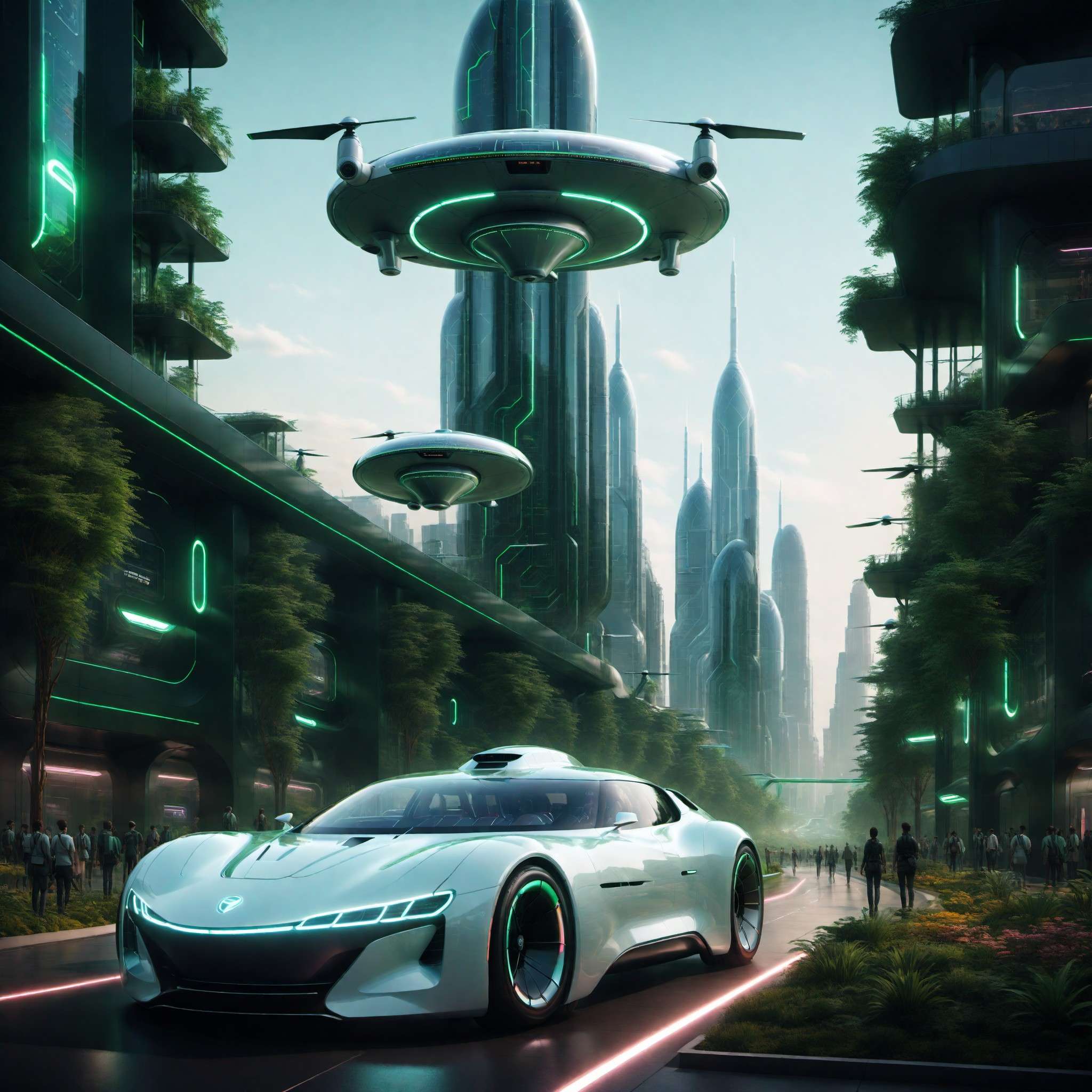
© Copyright , ZombieBunny.Org
Effects on society and social structures
The advent of flying cars could have profound effects on society and social structures. As with any transformative technology, flying cars could bring about significant changes in the way we live, work, and interact.
On a positive note, flying cars could democratize access to fast, efficient transportation. By cutting commute times, they could potentially enable people to live further from cities, reducing urban crowding and possibly leading to more balanced regional development. Flying cars could also enhance mobility for people in rural or remote areas, providing a fast and convenient mode of transport where ground transportation options are limited.
However, there are also potential challenges. For instance, there could be concerns around equality and access. If flying cars are expensive, they might only be accessible to the wealthy, potentially exacerbating social inequalities.
Furthermore, the widespread use of flying cars could bring about significant changes in urban landscapes, with impacts on community cohesion and local culture. For instance, the development of vertical take-off and landing pads could alter the built environment, while increased air traffic could affect noise levels and views of the sky.
Finally, there are potential implications for privacy, with flying cars potentially enabling unprecedented levels of surveillance and intrusion.
As we stand on the cusp of the era of flying cars, it’s crucial to consider these potential social impacts and develop strategies to maximize the benefits and mitigate the challenges.
Environmental considerations
Environmental considerations are an essential aspect of the development and deployment of flying cars. As the world grapples with climate change, the need for sustainable, low-carbon transportation is more critical than ever.
On the positive side, if powered by electricity, flying cars could offer a form of transportation with zero emissions at the point of use. This could contribute to reduced air pollution and lower greenhouse gas emissions, particularly if the electricity is generated from renewable sources.
Furthermore, by reducing traffic congestion and shortening travel times, flying cars could decrease the overall energy use of the transportation sector. They could also lead to a reduction in the amount of infrastructure, such as roads and parking lots, required for ground-based vehicles, potentially freeing up space for green areas.
However, there are also potential environmental challenges. For instance, the production of flying cars and their batteries could have significant environmental impacts, particularly if not managed sustainably. Flying cars could also increase overall energy demand, with implications for the power sector.
Moreover, the noise generated by flying cars could have impacts on wildlife, particularly birds, and could contribute to noise pollution in urban areas.
As the dawn of the era of flying cars approaches, it’s crucial to consider these environmental factors. With thoughtful design and responsible policies, it’s possible to minimize the environmental footprint of flying cars, ensuring they contribute to a sustainable transport future.
Balancing technological advancement with sustainability
As we stand on the cusp of the era of flying cars, one of the key challenges we face is balancing technological advancement with sustainability. This involves not only minimizing the environmental impact of flying cars but also ensuring their development and use contribute to broader sustainability goals.
Technological innovations offer significant opportunities to enhance the sustainability of flying cars. For instance, advances in battery technology could enable longer flight times and shorter charging times, reducing the energy footprint of flying cars. Similarly, improvements in materials science could lead to lighter, more fuel-efficient vehicles.
However, technological advancement must be coupled with sustainable practices and policies. This includes promoting renewable energy for charging electric flying cars, implementing sustainable manufacturing processes, and encouraging responsible use to minimize noise and other forms of pollution.
Furthermore, flying cars should be integrated into sustainable urban and transport planning. This could involve prioritizing shared use to maximize efficiency, developing infrastructure that minimizes environmental impact, and ensuring flying cars complement other forms of transport rather than replacing them.
Finally, it’s crucial to ensure that the benefits of flying cars are broadly shared, avoiding a scenario where they contribute to social inequality.
In summary, while the advent of flying cars presents exciting possibilities, it’s vital to balance these with sustainability considerations. By doing so, we can ensure that flying cars contribute to a more sustainable and equitable future of transportation.
Preparing for the Future

© Copyright , ZombieBunny.Org
Education and skill requirements for the future
As we move towards a future where flying cars become a reality, there will be significant implications for education and skill requirements. The development, manufacture, and operation of flying cars will necessitate a workforce with a unique set of skills, many of which are currently rare or nonexistent.
Technical skills in areas such as aerodynamics, electric propulsion, avionics, and autonomous systems will be in high demand. These skills will be essential not only for designing and building flying cars but also for maintaining and repairing them.
But technical skills alone will not suffice. Given the multidisciplinary nature of flying cars, skills in areas like regulation, urban planning, environmental science, and public policy will also be crucial. Understanding the intersection of technology with societal, environmental, and regulatory considerations will be key to successful implementation.
Furthermore, as flying cars could be largely autonomous, there will be a need for skills related to AI and automation. This includes not only development but also ethical, legal, and safety considerations of autonomous systems.
Finally, as flying cars are likely to be a shared resource, skills related to fleet management, ride-hailing platforms, and shared mobility will also be important.
Educational institutions and training programs will need to adapt to these needs, offering courses and degrees that equip students with the requisite knowledge and skills. The dawn of flying cars presents not only technological challenges but also a need for a new generation of skilled professionals ready to drive this revolution forward.
Adapting infrastructure for flying cars
As we prepare for a future where flying cars become a reality, adapting our infrastructure will be a major challenge. Our current transport infrastructure is designed for ground-based vehicles, so accommodating flying cars will require significant changes.
One of the primary infrastructure needs for flying cars is the creation of takeoff and landing pads. These pads would need to be safe, secure, and strategically located to maximize convenience and efficiency. They could be built on rooftops, vacant lots, or integrated into existing infrastructure like parking lots or transportation hubs.
In addition to takeoff and landing pads, we would also need to develop infrastructure for refueling or recharging flying cars. If flying cars are electric, this could involve expanding our electric charging infrastructure to accommodate them.
We will also need to develop systems for managing air traffic. With potentially thousands of flying cars in the air at once, creating a system that can ensure safe and efficient traffic flow will be crucial.
Infrastructure for maintenance and repairs will also be necessary. Because flying cars are more complex than traditional vehicles, specialized facilities and equipment will be required.
Adapting our infrastructure for flying cars is a massive undertaking, requiring significant investment and planning. However, with the right approach, it’s a challenge that can be overcome, paving the way for the widespread adoption of flying cars.
Getting ready for a new era of transportation
As we stand on the brink of a new era of transportation, there are several steps we need to take to prepare for the advent of flying cars.
Firstly, we need to invest in education and training to develop the skills required for this new industry. This means not only training engineers and technicians, but also policymakers, urban planners, and other professionals who will play a role in integrating flying cars into our societies and economies.
Secondly, we need to adapt our infrastructure. This includes creating takeoff and landing pads for flying cars, developing systems for managing air traffic, and setting up facilities for charging or refueling, maintenance, and repairs.
Thirdly, we need to develop robust regulatory frameworks. Regulations will need to cover a range of issues, from safety and noise levels to privacy and land use. They’ll also need to strike a balance between encouraging innovation and ensuring public safety and welfare.
Lastly, we need to engage with the public. Public acceptance will be crucial for the successful integration of flying cars into our lives. This means not only addressing people’s concerns around safety, noise, and privacy, but also highlighting the potential benefits of flying cars, from reduced commute times to improved access to remote areas.
The dawn of flying cars represents a transformative shift in transportation. By taking these steps, we can ensure we’re ready to embrace this new era and reap the benefits it promises.
Conclusion

© Copyright , ZombieBunny.Org
Recap of the potential of flying cars
The potential of flying cars is enormous, promising to revolutionize transportation and transform our cities and societies. These vehicles could offer a solution to traffic congestion, reduce commute times, and provide a new mode of transport for people in remote or under-served areas.
Several companies, from aerospace and automotive giants to innovative start-ups, are racing to develop flying cars. They’re working to overcome technical challenges, from improving battery performance and reducing noise to ensuring safety and reliability. The competitive landscape is dynamic and diverse, driving rapid innovation and progress in the field.
However, the journey to widespread adoption of flying cars is not without challenges. These include not only technical hurdles but also regulatory issues, the need for new infrastructure, and public acceptance. Balancing technological advancement with sustainability considerations is also crucial.
Preparing for this new era of transportation requires concerted efforts on multiple fronts. We need to invest in education and training, adapt our infrastructure, develop robust regulations, and engage the public.
As we stand on the brink of a new era of transportation, the potential of flying cars is becoming increasingly clear. While there are challenges to overcome, the progress made so far gives us reason to be optimistic. The dawn of flying cars may be closer than we think, promising a future where personal aerial transportation is a reality.
Final thoughts on the impact of this technology
As we contemplate the dawn of flying cars, it’s clear that this technology has the potential to reshape our world. From transforming our daily commutes to revolutionizing logistics and delivery services, flying cars promise a future where the sky is truly the limit.
The impact of this technology extends beyond transportation. It holds implications for the economy, with the creation of new jobs and industries, and for society, potentially democratizing access to fast, efficient transport. It could reshape our cities, with new infrastructure and the potential for reduced road traffic, and it could spur innovation in a range of related fields, from energy storage to artificial intelligence.
However, the path to this future is not without hurdles. Technical, regulatory, and social challenges must be addressed, and the environmental implications need careful consideration. Balancing the excitement of this new frontier with the need for responsible, sustainable development is essential.
As we prepare for the future of flying cars, it’s crucial that we approach it with both optimism and caution. We need to harness the potential of this technology while mitigating its risks, ensuring that it benefits all of society and contributes to a sustainable, equitable future.
The prospect of flying cars, once a fantasy limited to the realm of science fiction, is becoming a tangible reality. As we stand on the cusp of this new era, the potential of this technology is truly exciting. It’s a journey that promises to take us to new heights, and it’s one we’re just beginning to embark on.
The road to the Jetsons’ reality
The dream of flying cars, popularized by the Jetsons and other science fiction, is on the cusp of becoming a reality. Advances in technology, increasing investment, and a growing recognition of the potential of flying cars are all converging to bring this once futuristic idea into the present.
The road to the Jetsons’ reality, however, is not a straightforward one. It requires not only technological innovation but also regulatory evolution, infrastructure development, and societal acceptance. It’s a journey that involves numerous stakeholders, from engineers and entrepreneurs to policymakers and the public.
Along this road, there are challenges to be overcome. These include technical hurdles such as improving battery life and reducing noise, regulatory issues related to safety and air traffic control, and infrastructure needs like takeoff and landing pads. Moreover, the environmental implications of flying cars need to be carefully considered to ensure this technology contributes to a sustainable future.
Yet, the potential benefits of flying cars are significant. They promise to revolutionize transportation, reducing congestion, cutting commute times, and providing new mobility options. They could reshape our cities, spur economic growth, and open up new opportunities for exploration and adventure.
The road to the Jetsons’ reality is a fascinating one, filled with promise and challenges. As we navigate this path, one thing is clear: the future of transportation is not just on the ground, but in the sky. And that future is closer than we might think.
Please support our site and purchase something from our store.







